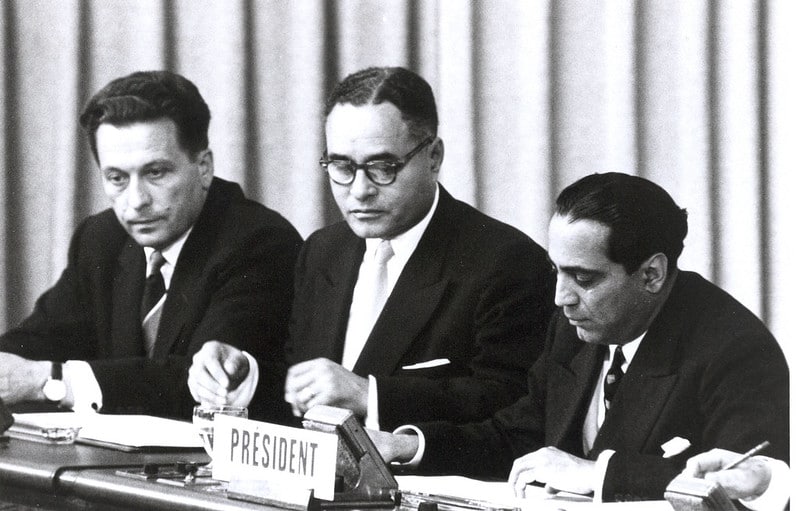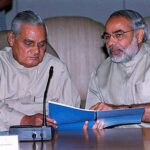Often great minds stem from the simplest of discoveries. Children are born brilliant. Curiosity is nothing but a figment of our ability to master science.
So, how does one channel their inner curiosity into discovering something great in life?
The more we explore the unexplored questions, the more we come close to unearthing the truth. Maybe that’s what Homi J Bhabha did. And that is why the story of the father of India’s Nuclear Program is worth telling.
Table of Contents
About Homi J Bhabha
Homi Jehangir Bhabha was born in Bombay on October 30, 1909, to Jehangir and Meherbai Bhabha. Schooled at John Connon School in Bombay and later gathered his education in Cambridge, Bhabha went on to become one of the most prominent and influential scientists in Indian history.
He was the founding director of the Atomic Energy Establishment, Trombay (AEET) which is now named the Bhabha Atomic Research Centre in his honour.
He played a crucial role in the development of electronics in India. It is probably because of his efforts we can see a brighter India, full of possibilities and ambitions.
Along with his particular interest in nuclear physics, Homi J Bhabha had a liking for art and culture. He was not only a monumental scientist but also a great visionary, who pushed forward the idea of a free and independent India. Such great personalities need to be put into the limelight and their teachings should be scorched into the minds of young India. It’s about time that we unravel their great achievements and celebrate them for their contribution towards shaping a better and brighter India.
Homi Bhabha's Horoscope
| Date of Birth | 30 October, 1909 |
| Place of Birth | Mumbai, Maharashtra |
| Zodiac Sign | Scorpio |
| Birth Number | 3 ruled by Jupiter |
| Destiny Number | 5 ruled by Mercury |
| Lucky Numbers | 3, 6, 9 |
Homi Bhabha’s family
Homi Bhabha was born to a wealthy Parsi family of Bombay. His father was a renowned lawyer who had his graduation from Oxford and his grandfather was the Inspector General of Education in the State of Mysore.
Homi Bhabha’s Married Life
Unfortunately, Homi remained unmarried till the day he died. However, he had a certain fling with Pipsy (also known as Parvana Irani). Pipsy was a close acquaintance of Homi and they often challenged the moral standards of that time.
Pipsy was also a key member in many of the TIRF initiatives which had renowned scientists including M. G. K. Menon. Her relationship with Bhabha was so strong that she was in charge of Bhabha’s numerous personal and professional papers after his imminent death.
Homi Bhabha’s Early Life & Education
Bhabha attended the Cathedral and John Connon Schools in Bombay.
After passing the Senior Cambridge Examination at the age of 15 Bhabha entered the Elphinstone College in Bombay and later the Royal Institute of Science, also in Bombay.
In 1927 Bhabha joined Gonville and Caius College in Cambridge where he did Mechanical Sciences Tripos in 1930. But his interest quickly started to divert to physics. In a letter to his father, Bhabha wrote, “I seriously say to you that business or a job as an engineer is not the thing for me. It is totally foreign to my nature and radically opposed to my temperament and opinions. Physics is my line. I know I shall do great things here.”
Bhabha stood true to his words. His interest in physics wielded results and he soon started working with great minds like W.Heitler and Cecil Frank Powell.
War and Homi Bhabha’s Return to India
In 1939 when the Second World War broke out, Bhabha came back to India. He thought he had returned for a short trip. But who would have thought that the return was permanent. In 1940 Bhabha joined the Indian Institute of Science at Bangalore where a Readership in Theoretical Physics was specially created for him.
It was at that time that major scientific research in India was booming. At IISC, he again worked with some of the greatest minds in Indian research like nobel laureate C.V. Raman & Father of Indian Space Program Vikram Sarabhai on cosmic rays.
Homi Bhabha’s Achievements as a Prolific Scientist
Homi Bhabha soon became interested in nuclear physics and the idea of channelizing nuclear energy intrigued him. With funding and support from Tata trust, Bhabha established the Tata Institute of Fundamental Research in 1950.
A department in atomic energy was set up which had a major contribution to the growth of nuclear sciences. Bhabha also had a close relationship with Jawaharlal Nehru, the first and then prime minister of free India.
He successfully was able to harness nuclear energy and launched the Indian nuclear program.
Homi Bhabha’s Untimely & Mysterious Death (1966)
While on his way to Vienna for a meeting of the International Atomic Energy Agency’s Scientific Advisory Committee, Bhabha succumbed to death due to a mysterious plane crash. Many theories suggest that the CIA had their hands behind the plane’s crash to paralyze the Indian nuclear program.
Homi Bhabha : Awards and Accolades
Throughout his career, Bhabha has been credited with several titles and was the recipient of many awards. He was even nominated for the Nobel Prize for Physics in 1951.
Some of his achievements include Adam’s Prize (1942) & Padma Bhusan in 1954.
Lessons From Homi Bhabha
More than anything, Bhabha was a master at words and diction. He was much of a diplomat as he was a scientist. His teachings and life lessons are not only revolutionary but instrumental in the country’s development.
Remembering the legacy of the great scientist eminent Astro strategist Hirav Shah brings you 2 lessons to learn from Homi Bhabha:
1- Follow your dreams:
From the get-go, Homi was a victim of societal pressure. His parents, like many of our own, wanted him to pursue engineering and he was sent to Cambridge on the notion to get a degree in mechanical engineering. But Homi had already found his love for physics and that was the only thing wanted to pursue. So, he started writing elaborate letters to his father explaining his dreams.
He explains, “For, each man can do best and excel in only that thing of which he is passionately fond, in which he believes, as I do, that he can do it, that he is born and destined to do it.”
2- Excellence takes time:
No great achievement has been achieved within 1-2 years. It has taken decades to achieve major scientific discoveries and feats. You cannot rush an experiment, simply because it will ruin its whole purpose. Similarly, you cannot rush a scientist, for he/she will lose his/her vision.
“This is a field in which a large number of mediocre or second rate workers cannot make up for a few outstanding ones, and the few outstanding ones always take at least 10-15 years to grow.”
– Homi J Bhabha
Conclusion
Great minds always yield great results. Slowly but surely, with the right education and grooming, anyone can be the next Homi Bhabha. His ideas and inventions have impacted billions of lives and it is not anytime soon that we are going to forget his legacy- concludes Business development expert Hirav Shah.
About Hirav Shah
Hirav Shah is an eminent Business Astrologer and Entrepreneur, who can help you reach new levels of success in the coming year. Shah’s unique practice mixes the fundamentals of Astrology with Business Principles, thereby introducing you to a whole new dimension of affluence.
Hirav Shah has an astounding global presence with clients based across various business sectors. He is a big believer in taking massive action, has formulated strategies and made the right strategic bets based on the certainty of outcome to help some of the world’s most renowned brands.
From business setup and expansion to crisis and exit, he can give you a strong Astro based analysis on where to apply leverage and where to cut losses.





























